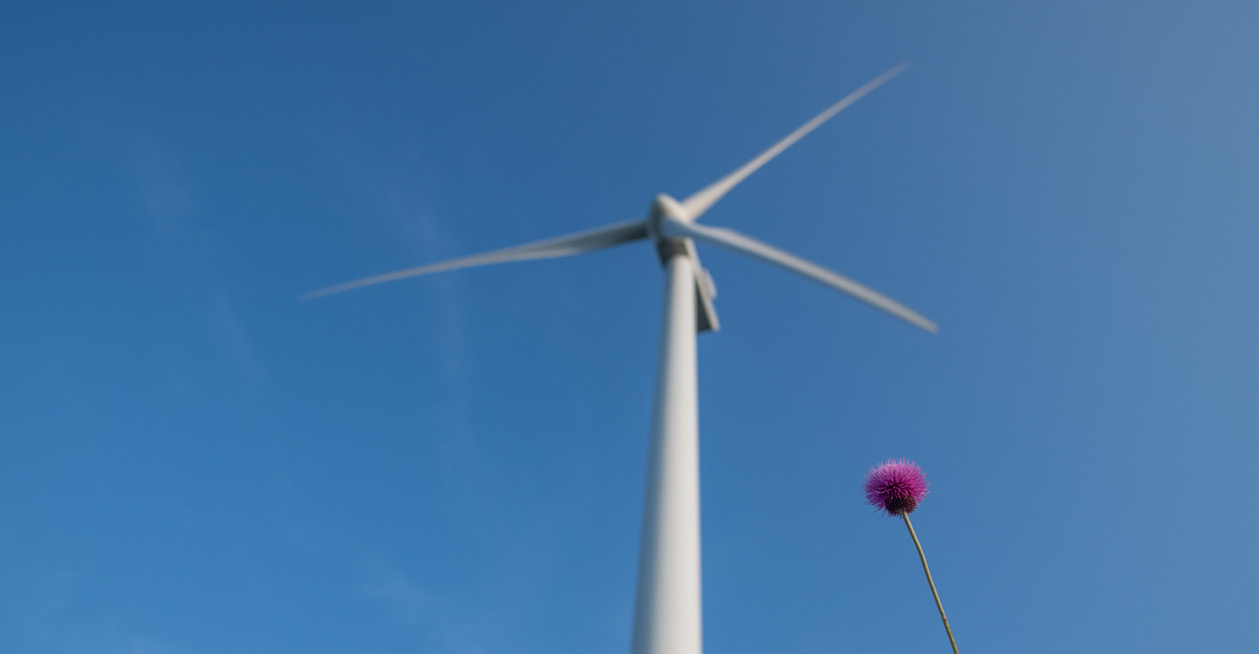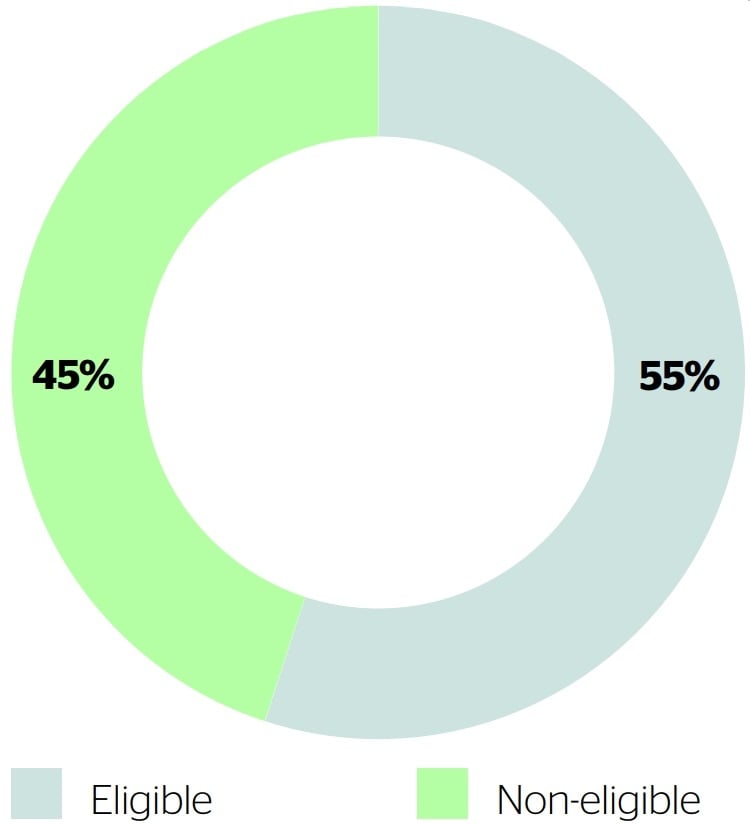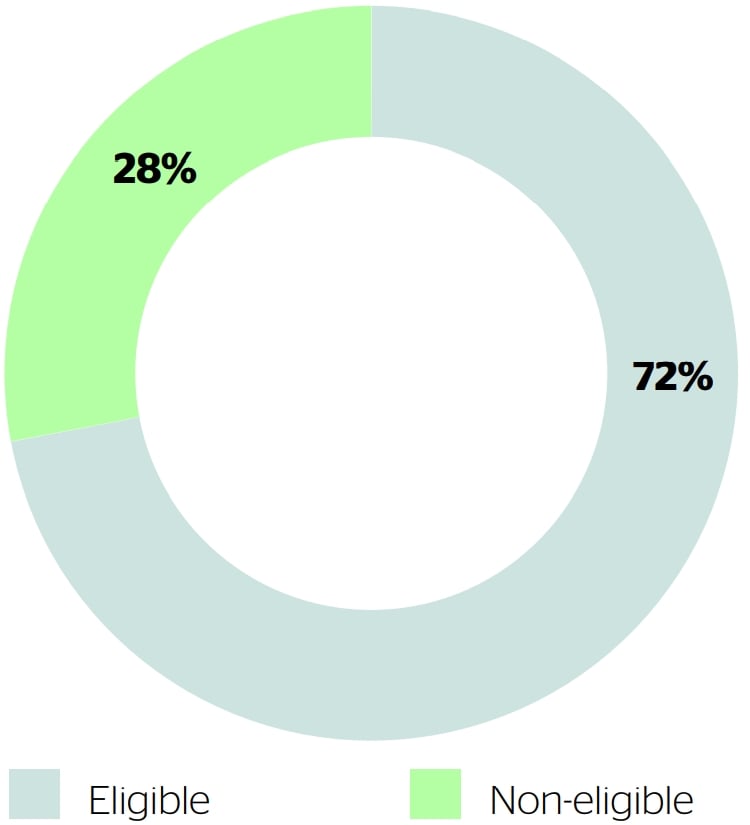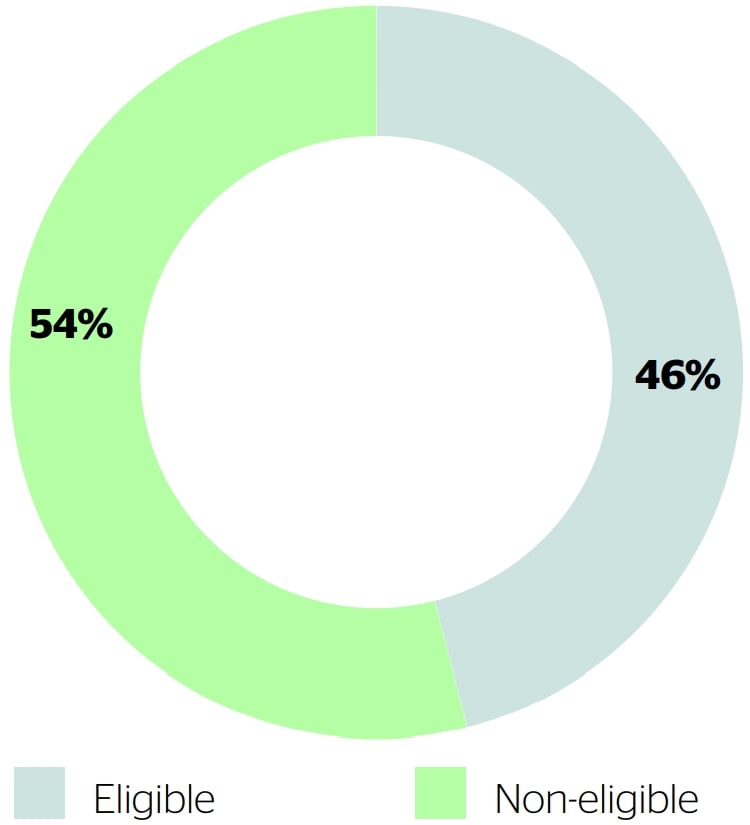Adaptation to Climate Change


Materiality assessment process results
Scale: [0–10], where 0 "Not significant" and 10 "Very significant"
| Boundaries of the Material Topic [GRI 102-46] [GRI 103-1b] |
|---|
| Where the impacts occur: The impacts of climate change may occur in the industrial units, RES plants, mines and construction sites of the Business Units and subsidiaries of MYTILINEOS, as well as within the boundaries of their operation. |
| By whom are the impacts caused: The Company’s Business Units and subsidiaries are directly involved in these impacts, while its supply chain may also be indirectly involved. |
| The management of the topic by MYTILINEOS contributes to Sustainable Development:
|
| Topic of increased significance to: |
in the context of their cooperation with MYTILINEOS. |
Management Approach
[GRI 102-11] [GRI 103-2c]
The purpose of this disclosure is to inform the Stakeholders about the steps to be taken by the Company in connection with its adaptation to climate change or, in other words, with the reduction of its vulnerability to the climate change phenomenon, by focusing on the following three main areas of work: (a) examining future climate forecasts at local level, in order to identify potential risks and the possibility of integrating the issue of adaptation to climate change into its business decision-making, (b) avoiding or minimizing climate-change-related damage and, where possible, taking advantage of opportunities to adapt to changing circumstances, and (c) implementing measures to respond to existing or projected impacts. [GRI 103-2b]
Key Challenges / Impacts
[GRI 103-1a] [GRI 102-15]
MYTILINEOS owns coastal industrial facilities in Greece and operates in countries where the impacts of climate change are more intense. Through its mining activity, which is directly related to natural resources, the Company may also face a range of challenges caused by the changes in the climate, as well as through the alumina production, due to the significant water needs of the process. The main challenge for the Company is to assess the vulnerability of its activities to climate change, considering existing and expected climate events and the impacts that these are projected to have.
Commitment
[GRI 103-2c]
Enhancing the resilience of the MYTILINEOS production units and adapting its activities to the existing and potential impacts of climate change.
Recommendations of the Task Force on Climate — Related Financial Disclosures (TCFD)
MYTILINEOS, as an industrial company, faces various climate-related risks. These risks could have a significant negative impact on MYTILINEOS's financial position, operations, profits, image and access to capital. At the same time, there are opportunities related to climate change that the Company can take advantage of. In order to fully understand the climate risks and opportunities that are presented, to consider the implementation of appropriate measures to manage them, and also to link them with financial data, MYTILINEOS started in 2021 the study and implementation of the recommendations of the Financial Stability Board (Task Force on Climate Related Financial Disclosures — TCFD), in each of the four specific thematic areas: Governance, Strategy, Risk Management, Metrics and Targets. The Company aims at the end of 2022 to be in line with 70% of the total recommendations of this initiative.
Governance
At MYTILINEOS, the responsible body for the supervision of the material topics of sustainable development, is the Company’s Sustainability Committee of the Board of Directors (BoD). The Committee assists the Company's Board of Directors in integrating sustainable development into the Company's core decision-making processes and operations, including the potential risks and opportunities associated with climate change. The Committee supervises and monitors the implementation of the Company's Sustainable Development strategy, at every level (Climate Change, ESG approach and Responsible Entrepreneurship) in accordance with national and international trends that may affect the Company's activities and performance.
The Sustainability Committee meets at least 3 times a year and additionally whenever necessary, regarding issues related to the management of sustainable development in the Company and in particular on climate change which is a key pillar of its strategy. The Board of Directors is informed at least twice a year, by the Committee, on climate-related matters and has oversight on the overall progress of CO2 reduction and net zero initiatives.
In particular, the remit of the Sustainability Committee is to monitor the progress achieved towards the CO2 reduction targets and the implementation of related initiatives. The Committee is extensively informed of the progress of these initiatives by the Corporate Governance and Sustainable Development General Division, informs the Board and proposes points for improvement where necessary. In addition, the Committee monitors the progress of the Company in other important climate-related initiatives that the Company undertakes or participates in, such as participation in the international CDP Climate Change initiative and alignment with the recommendations of the TCFD initiative.
The Corporate Governance and Sustainable Development General Division, through its crucial and coordinating role, cooperates closely with all Business Units and determines the strategic priorities of the Company regarding the management of climate change. It informs the Company's Executive Committee and provides information to the Board, through the Sustainability Committee, on the management of carbon reduction initiatives, the progress against climate targets and the potential risks and opportunities associated with climate change, if required. At the same time, it supports the work of the Sustainability Committee regarding the supervision of corporate initiatives for adaptation and response to climate change.
New operating model
In 2021, the Company conducted a special study for the transformation of its operational structure with the aim of further integrating sustainable development and issues related to climate change in its processes. In particular, the integration of ESG criteria in key processes of the Company, such as: in the performance management system, in the evaluation of investment projects, in the annual budgeting process, in the evaluation of existing and future suppliers, is currently underway. Regarding non-financial data disclosures, their linkage with financial data is systematically promoted, by incorporating basic "best practice ESG KPIs" in all the main financial reports.
Regarding the new operating model of the Company, the Corporate Governance and Sustainable Development General Division works closely with the Sustainability Leaders assigned at each BU to monitor the progress of the implementation of initiatives to reduce CO2 emissions and achieve a net zero carbon footprint. The Sustainability Leaders, in collaboration with ESG category owners and ESG initiative owners at each BU, develop and implement the relevant action plans, the progress on which is the subject of dedicated meetings with the central Sustainable Development Division of the Company. The ESG category owners monitor progress and provide technical guidance to ESG initiative owners, who implement specific projects or initiatives related to the climate and Sustainable Development. Regarding climate change risks, the BU Sustainability Leaders in collaboration with the ESG category owners are responsible for identifying and initially assessing potential climate-related risks prior to integrating these risks into the Company's central Enterprise Risk Management System (ERM).
Strategy
MYTILINEOS launched in 2021 a thorough analysis and prioritization of the risks and opportunities associated with climate change that may affect its activities. Through this process, the Company will be able to properly adapt its operations, in order to address the risks and to take advantage of the opportunities presented. The analysis focuses on existing industrial facilities in Greece and projects owned by MYTILINEOS, as in these cases the assessment of climate risks and opportunities is material. In the context of this analysis, the time horizons examined by MYTILINEOS are the following:
- Short-term (1 to 3 years)
- Medium-term (3 to 10 years)
- Long-term (10 to 30 years)
Main categories of climate risks and opportunities for MYTILINEOS
[GRI 102-15]
- Transition risks: Responding to extensive changes in the policies, laws and technologies concerning the measures for adapting to and mitigating climate change, in the broader context of the transition to a lower carbon emissions economy at the domestic, European and global level. Additionally, climate change has been identified as a potential source of reputational risk associated with changes in the Stakeholders’ perception of the Company’s contribution to a lower carbon economy.
- Physical risks: These are risks associated with intense or longer-term natural changes which are considered important for the operation of the Company's industrial plants including, among others, the destruction of infrastructure due to extreme weather conditions, the reduction of available water resources due to lower rainfall, the rise in the sea level, the loss of working days due to extreme temperatures, the need to strengthen measures and actions to protect and restore the environment, etc. These physical risks may have economic impacts, such as direct damage to assets, as well as indirect impacts due to the disruption of the supply chain.
Both transition risks and physical risks may affect MYTILINEOS and its activities. Regarding transition risks, such as new regulatory requirements, the transition to a sustainable future with low carbon emissions will include the creation of additional regulatory measures by policy makers, in addition to existing ones. As the Metallurgy and Power & Gas BUs are among the industries that are difficult to become independent from coal, the new regulatory requirements related to climate and energy may have significant implications for the Company, both financial and others. MYTILINEOS closely monitors compliance with regulatory requirements and actively participates in work streams for the development of new regulations, in order to ensure that all relevant risks are included in the Company's risk management system.
At the same time, acute physical risks such as extreme weather events are relevant to all MYTILINEOS activities as they could affect the factories, facilities, construction sites and the normal operations of the Company. Depending on the Business Unit, some of these risks are more significant.
The table below presents the results of the first analysis of the most significant climate-related risks and opportunities that MYTILINEOS has identified for each time horizon.
| Risks | Short-term (2022-2025) | Medium-term (2030) | Long-term (2050) |
|---|---|---|---|
| Increased prices of GHG emissions | • | • | • |
| Increased electricity and fossil fuel prices | • | • | • |
| Increased raw materials cost | • | • | |
| Raw materials’ shortage (RMS) due to global recycling trends | • | • | |
| Transition to new technologies for aluminium production | • | • | |
| Extreme precipitation | • | • | |
| Increased severity of extreme weather events (heat waves, storms, wildfires, floods, etc.) | • | • | |
| Opportunities | Short-term (2022-2025) | Medium-term (2030) | Long-term (2050) |
| Investments on renewables | • | • | • |
| Electrification of final demand | • | • | • |
| Investments in technical development efforts (i.e. develop battery storage capacity and prediction technology for renewables) | • | • | |
| Raising capitals through issuing "transition bonds" | • | • | • |
| Investments on energy efficiency and more efficient production processes | • | • | • |
| Increased use of recycled materials (secondary aluminium production) | • | • | |
| Use of more efficient mode of transport | • | ||
| Investments on non-carbon materials | • | • | • |
| Investment on secondary aluminium production | • | • | • |
| Investments on storage systems | • | • | • |
| Increased demand for low carbon products and infrastructures (low carbon buildings, etc.) | • | • | • |
| Participation on projects aiming to protect infrastructure and restore climate-related damages | • |
Integration of climate-related risks and opportunities in the Company business model
The Company has created Business Units oriented to the dynamic development of sustainable projects internationally (Renewables & Storage Development BU, and Sustainable Engineering Solutions BU). Therefore, the Company is projected to play, in the next critical decade, an important role in the energy transition and in the reduction of greenhouse gas emissions worldwide, scaling its positive impact in order to become one of the leading companies in the global market in this field. At the same time, taking into account the high intensity of CO2 emissions in both aluminum production and electricity generation processes, climate change is a key element for the sustainability of MYTILINEOS's activities. In this context, the Company has developed a strategy for tackling climate change, which guides its initiatives to reduce carbon dioxide emissions as set out in the Kyoto Protocol, the Paris Agreement on Climate Change (CoP21) and the corresponding National Plan of Greece, which determines its contribution to the European Green Deal. MYTILINEOS is the first Greek industrial company to set specific, measurable and ambitious targets for reducing CO2 emissions by 2030 and 2050, thus making carbon footprint reduction a priority of the new Sustainable Development Strategy. The strategy for the emission reduction targets for each of the 4 MYTILINEOS BUs was developed in December 2020, according to the well below 2 degrees Celsius scenario of the International Energy Agency (IEA). MYTILINEOS products and services have been drastically modified and improved over the last 4 years, incorporating climate-related risks and opportunities. Large or small adjustments have been made to the 4 MYTILINEOS BUs in order to create an organization that focuses on sustainability. MYTILINEOS has developed and launched the implementation of specific action plans in order to address climate change risks and opportunities. More information is available in the section "Tackling climate change".
Furthermore, our financial planning incorporates instruments related to climate risks and opportunities. For example, in April 2021 MYTILINEOS issued a 500 million Euro Green Bond to finance future growth in solutions that contribute to the mitigation of climate change. More information is available at the following link.
MYTILINEOS is currently in the process of integrating climate change risks and opportunities in its formal strategy and financial planning procedures.
Climate scenarios
In line with the TCFD recommendations, MYTILINEOS relies on climate "scenarios" to understand the strategic implications of climate risks and opportunities. In the context of the MYTILINEOS analysis, 3 scenarios (Representative Concentration Pathway — RCP) were selected, which present possible pathways regarding the concentration of greenhouse gases under different socio-economic assumptions and climate policies, based on the 5th Evaluation Report of the IPCC (AR5).

The analysis of selected social and economic parameters (e.g. coal, energy and fuel prices) as well as climate (e.g. temperature, drought, sea level rise) for each of the selected scenarios is currently in progress.
Quantification of financial impact and prioritization
At a final stage, MYTILINEOS will proceed with the quantification of the financial impact of risks and opportunities, through a special analysis of the relevant financial parameters. According to the results of the implementation of the climate scenarios, and the quantification of the financial parameters, the prioritization of the climate risks and opportunities that are expected to have a significant impact on its activities will be carried out.
Risk Management
Risk and opportunity identification
In 2021, MYTILINEOS launched an in-depth analysis to identify climate-related risks and opportunities in its Business Units. The identification of climate-related risks and opportunities was carried out following a systematic desk-based review of MYTILINEOS's activities, data analysis and consultations with relevant stakeholders. As a result of this analysis, a list of 57 risks and 27 opportunities related to climate change and found to affect the various activities of MYTILINEOS was compiled.
All identified risks and opportunities were assessed against two main criteria and the following sub-criteria:
- The materiality of the consequences that may occur from the identified risks and opportunities:
- Time horizon: short-term (2022-2025), medium-term (until 2030), and long-term (until 2050).
- Financial impact
- The level of certainty that the identified risks and opportunities will actually occur.
- Confidence: to what extent the risk or opportunity can be quantified through the considered climate scenarios and reliable data can be found.
- Sensitivity: what kind of variations do parameters related to climate risks and opportunities present based on the different climate scenarios considered.
- Outcome likelihood: direction and / or rate of change of parameters related to climate risks and opportunities.
Following the implementation of the criteria, the risks and opportunities were categorized into 4 groups for each MYTILINEOS Business Unit:
- Risks / opportunities of high importance and high certainty. To the extent possible these risks and opportunities are analysed in quantitative terms, utilizing the background information of various climate scenarios as well as elementary data of the future development of MYTILINEOS. Proactive actions are envisaged for these risks and opportunities with a view to be integrated in the future policies of MYTILINEOS.
- Risks / opportunities of high importance and low certainty. These risks and opportunities are monitored on a systematic basis, and to the extent that they appear to constitute a significant risk or opportunity for MYTILINEOS, appropriate management plans will be developed. However, immediate action is not required.
- Risks / opportunities of low importance and high certainty. These risks and opportunities are watched without any further need to develop appropriate management plans.
- Risks / opportunities of low importance and low certainty, which are not considered material.
Management / Control practices
[GRI 103-2a]
In order to adapt to climate change and reduce the impact of relevant potential risks, the Company takes the following steps: a) examines climate forecasts locally to identify potential risks b) integrates the issue of climate change adaptation in its business decision-making in order to avoid or mitigate the damage associated with climate change and, where possible, to take advantage of opportunities to adapt to changing conditions; and c) implements appropriate measures as a result of the above procedures.
In the context of the implementation of the relevant Management Systems of the Company, the following measures are implemented at each BU:
- In the Power & Gas Business Unit, the major risks have been assessed and no apparent need to adopt specific targeted measures has been identified. Regarding the Company’s thermal plants, Emergency Response Plans have been developed to address the occurrence of extreme natural phenomena (heatwave, frost, storm, flood etc.), while special flood studies have also been carried out where streams are located in the vicinity of the Company’s power plants. With regard to the operation of RES plants, wind turbines are fitted with safety systems which in the event of very strong winds switch the turbines off and move their blades to a secure position, while solar collector panels are hail resistant by manufacture.
- In the Metallurgy Business Unit, studies have already been carried out regarding the risks of flood, accidents and destructions, while existing infrastructures have been improved and new ones have been constructed to address the most extreme weather events. The relevant emergency response plans have also been developed. Moreover, in the context of mining activities no particular impacts have been identified so far in the Company’s underground sites requiring the implementation of specific adaptation measures. A climate change risk study related to water has also been conducted. ASI
- Regarding the Company’s business activity abroad, through the Renewables & Storage Development and Sustainable Engineering Solutions BUs, appropriate protection measures are adopted and implemented within the boundaries of the facilities and work sites, to ensure that all conditions resulting in deviations from the Business Unit’s smooth operation are dealt with effectively.
Integration of climate risks in the Enterprise Risk Management System
The Company has developed an Enterprise Risk Management System for the identification, analysis, evaluation, monitoring and reporting of risks, in order to reduce the possibilities and impacts of risks and maximize the benefit of the opportunities presented and applies a risk assessment methodology (Enterprise Risk Assessment). The results of the risk assessment are communicated by the Risk Management Division to the Executive Committee and the Audit Committee of the Board of Directors of MYTILINEOS. The methodology applied aims to integrate risk management into the Company's processes and activities. More information is available in the "Enterprise Risk Management" section of this Report
In terms of risks and opportunities related to climate change, MYTILINEOS plans to integrate the most material in the Enterprise Risk Management System, which is managed by the Risk Management Division. Risk Owners in each Company BU are responsible for identifying and evaluating risks and opportunities, in collaboration with the Sustainable Development Division. The general principles for identifying and managing risks are described in the Annual Financial Report 2021.
Metrics & Targets
The disclosure of the Scope 1, 2 and 3 emissions as well as information concerning the climate targets set by the Company and concern: a) absolute and specific CO2 targets, b) the relevant time horizon, c) the base year that has been set, and d) the key performance indicators used to assess progress against them are presented in the sections of this report "Energy & Air Emissions" and "Tackling Climate Change" respectively.
Climate-related risks may have financial implications for MYTILINEOS, affecting its sales, operating costs mainly due to rising energy costs and emission allowance prices, financing terms, investments required to achieve various objectives etc. Climate-related opportunities mainly concern the increase of the share of sales from low-carbon products or products necessary for the green transition.

Results
[GRI 103-3a-ii]
In 2021, MYTILINEOS submitted for the first time a report to the international CDP Climate Change initiative (Ranking C), disclosing extensive data on the actions it implements related to climate change and comparing its performance with the largest companies in the world.
European Taxonomy of Sustainable Investments
In order to meet the EU's climate and energy targets by 2030 and the European Green Deal targets, it is vital to focus investment on sustainable projects and activities.
To achieve this requires the development of a common language and a clear definition of what is "sustainable". That is why the action plan to finance sustainable growth has created a common classification system for sustainable economic activities, the European Taxonomy.
In this direction, in 2021, MYTILINEOS proceeded to review its financial activities in order to determine which of them fall within the framework of the European Taxonomy, as defined by Regulation (EU) 2020/852 (art. 8), and then to publish related financial KPIs such as revenue, capital expenditure (CAPEX) and operating expenses (OPEX) related to these activities.
The proportion of the total turnover from the sale of goods or provisions of services, as well as the total CapEx and OpEx of the Group’s economic activities that correspond to activities determined to be eligible for EU Taxonomy purposes according to the description of these activities and taking into account the respective NACE activity codes, as these are presented in the Delegated Act 2021/2139/EU, are presented below. Since we are currently in the first period of implementation of the Taxonomy framework (1/1 — 31/12/2022), the Group’s economic activities were reviewed and ultimately included/excluded solely on eligibility basis and their alignment with the relevant technical screening criteria provided in the related Delegated Acts has not been reviewed.
- Proportion of the total turnover. It was calculated based solely on the total net turnover from the sale of goods and provision of services. The numerator includes only the activities that are considered to be eligible according to the Taxonomy regulation and under the condition that said revenue does not include own use and intergroup transactions.

- Proportion of the total CapEx. It was calculated based on the capitalized expenses incurred for additions to assets or processes corresponding to eligible economic activities. The numerator includes only the activities that are considered to be eligible according to the Taxonomy regulation.

- Proportion of the total OpEx. It was calculated based on the operating expenses related to the repair and maintenance of assets or processes corresponding to eligible economic activities. The numerator includes only the activities that are considered to be eligible according to the Taxonomy regulation.

More information on MYTILINEOS activities under the European Taxonomy is available at the MYTILINEOS Annual Financial Report 2021.